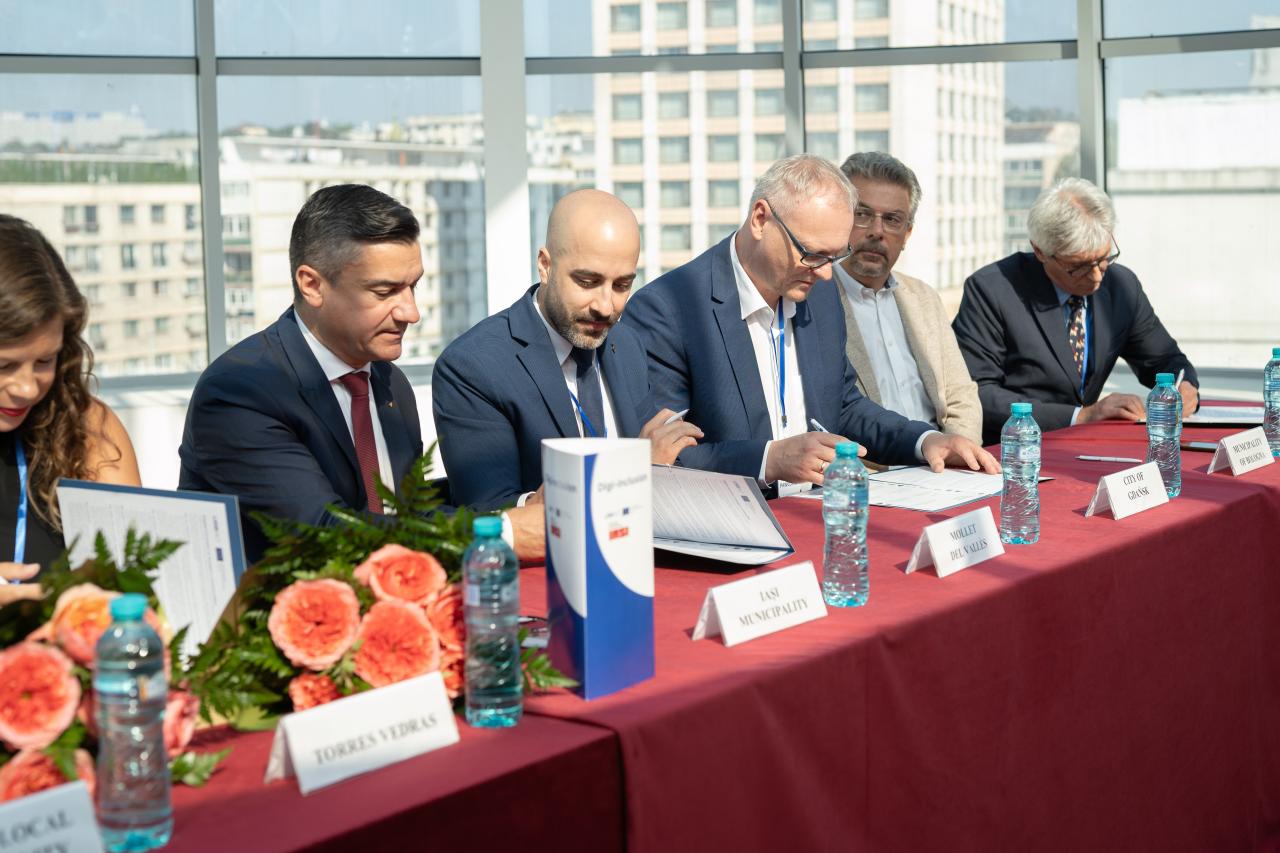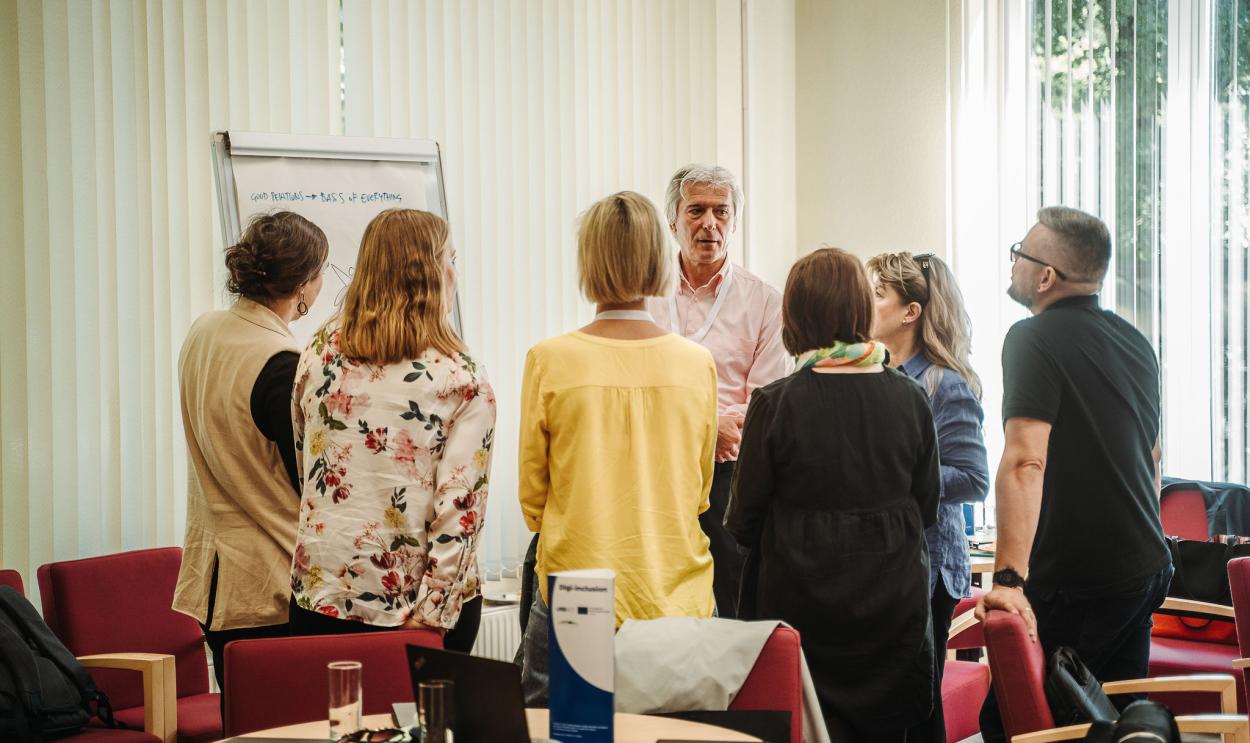So far, we have looked in detail at the First and Second Digital Divides, exploring barriers to accessing technology, and where people lack the essential skills for using those technologies respectively. We have also seen a number of local practices and project examples as part of our visits, including the use of digital mentors in community centres in Mollet del Vallès, digital support programmes of the Zemgale regional development centre in Jelgava, and the municipal office in Torres-Vedras which supporting digital access and training for people with visual impairments.
We have also been developing our exciting concept for our Digi-Inclusion Playbook for Cities – a collection of latest thinking, frameworks, tips, advice and good practices for tackling the digital divide at a local level. This is intended not to be another “same old” toolkit with a few examples and obvious statements, but a detailed framework and playbook of approaches for cities to use when assessing their current position and taking their next steps, both to understand and to tackle the digital divide in their territories. It is intended to push their thinking on the topic, and combine that with practical steps they can take, tools they can use, and practices they can draw inspiration from. It will offer something for those starting out, but also those who are part way along the road and we are excited about the learning we can share through it.
A key part of this is informed by our work on identifying and measuring the digital divide at local level – looking at how we can define and measure the divide, what the different challenges are in doing so and how we might take a different approach to overcome that and obtain a more useful picture of the local digital exclusions.
This work is forming a cornerstone for our Playbook, and will be bringing a lot of new ideas in this field. Whilst there is a lot of research on the digital divide, most of this is at a European or national level – there is much less good content easily available about the local divide and the local interventions, and particularly about identifying and measuring the divide locally. Many cities have carried out good initiatives, but most of these are not highly visible to others who are looking for a better understanding of the divide, or for potential ideas and solutions. We hope our Digi-Inclusion Playbook will go some way to filling that gap and make digital exclusion easier for city practitioners to understand and to tackle.
2025 will be an exciting year for Digi-inclusion, and you can follow more on these emerging topics in our next Network Journal that will be released in the coming weeks.



